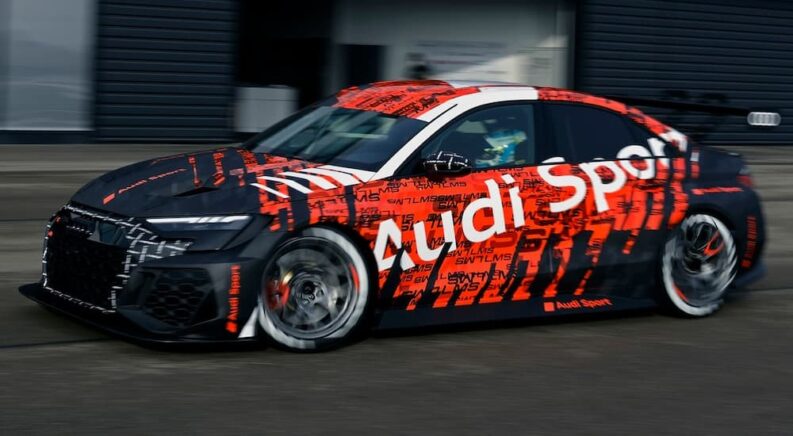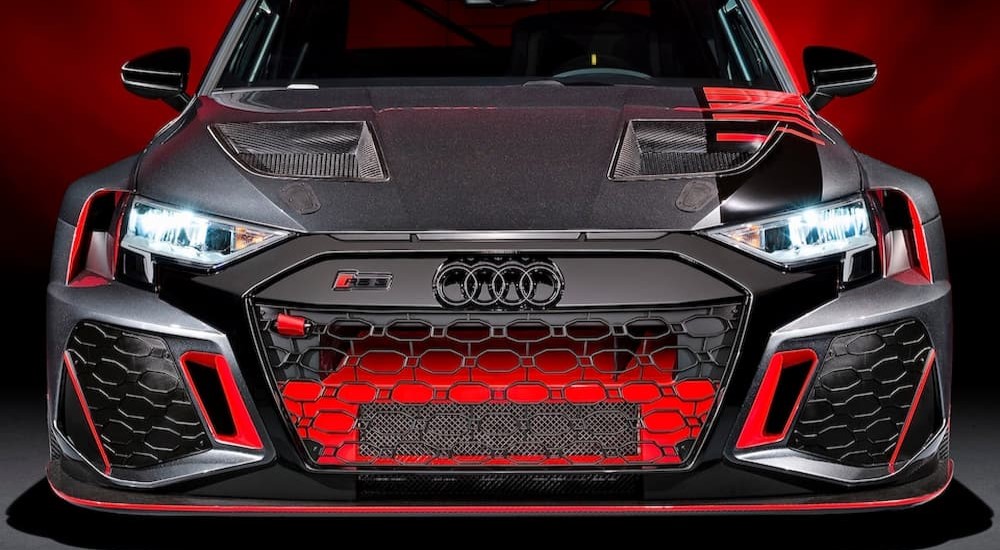If your exposure to motorsports is basically limited to ads on major cable networks, you might think that professional automotive racing is essentially represented by NASCAR and Formula One. These are, after all, the most famous and heavily-advertised leagues (with IndyCar being a credible third fiddle here in North America). But the truth is that there are endless classes and categories of professional racing, providing every type of vehicle at every performance level the opportunity to be used in competition. Even front-wheel drive, four-door sedans––so-called “touring cars”––have a place in the racing world!
In fact, they have many places in the racing world, from the prestigious British Touring Car Championship to the ever-evolving DTM to the defunct FIA World Touring Car Championship. The latter was swept up in a high-momentum movement that seems to be unifying the sport at an international scale: Touring Car Racing, better known as TCR and the winner of Blandest Name of 2014. The fact that an FIA entity was overwhelmed by an upstart begs the question, what is Touring Car Racing, and how is it taking this sport by storm?
The Case for Racing Commuter Cars
The history of the domestic automobile is thoroughly intertwined with motorsports. In the dawn of the automotive age, it was through competition that different makers pushed each other to new heights of performance and capability. It was through the excitement generated by racing amongst fans that interest in automobiles reached the masses. It’s no surprise, then, that as consumer vehicles became more competitive, manufacturers would turn to racing as a stage to showcase their dominance.
Ken Gregory receives credit for selling the idea of a touring car championship in 1950s England, where the British Saloon Car Championship was first run in 1958. The idea already had popularity––people who had these types of cars were racing on their own disorganized terms. It only made sense to create a large organization to homogenize the rules, promote big events, and involve the manufacturers!
The idea has been tremendously successful, with the still-operational British Touring Car Championship claiming to be the third-longest-running racing league in the world after Formula 1 and NASCAR. Dozens of series around the world are known to have existed at various points since 1958, including Argentinian and Brazilian leagues, which date to the 1970s and are still going strong. But there’s been a remarkable trend sweeping across this industry of small, independent racing leagues––Touring Car Racing.
What Is TCR?
The roots of today’s hottest touring car racing regulations reach back to FIA’s World Touring Car Championship, which ran from 2005 to 2017. The Championship’s manager, Marcello Lotti, recognized the organization’s direction––which was becoming increasingly expensive and unpalatable to manufacturers––was unsustainable long-term. So in his spare time, he conceptualized what would become Touring Car Racing in 2014 (perhaps putting more of an emphasis on developing a world-beating framework of logistics and regulations than the name). With regulations based on the frugal but high-performance SEAT Leon Cup Racer, and a structure that simultaneously organized competition at national and regional levels, it was the kind of vision that all stakeholders could get behind––so they did.
The structure was intended to be flexible enough for manufacturers to participate the way they would like to––via traditional factory teams, customer-run teams, or even (as in the case of VW and Audi) representation from multiple in-house marques––with a proven balance of performance methods and limited performance specs (2.0L turbocharged I-4 engines, making up to 350 hp in an FWD four or five-door platform). Amidst a sea of startup racing series, this one managed to catch traction, getting Ford, Honda, Opel, and VW involved before the first season began––a season during which TCR was the Formula One support series in much of East Asia! These coups lent credibility to the TCR International Series, which surely played a role in the establishment of several regional and national championships before the first season was over!
It seems that those who were willing to look into TCR specs liked what they saw––high speed, attractive style, and reduced costs. The international series spawned more than a dozen national and regional series in no time at all, establishing the pyramid structure Lotti had desired. The meteoric success of TCR International––pulling in Audi, Hyundai, Alfa Romeo, and Subaru, among others, while racing in ever more diverse locations and attracting high-profile drivers like touring car legend Gabriele Tarquini––meant that only three years later, the FIA merged with TCR to replace the World Touring Car Championship with the World Touring Car Cup (WTCR).
This ended the TCR International series as well, but only in name. The merger meant the FIA was adopting TCR’s rules and regulations, taking the concept to new heights. Though this venture would ultimately fail––WTCR was plagued with issues of balance and external influence and folded after the 2022 season––the cat was very much out of the box.
Now What?
The collapse of WTCR is less the demise of TCR and more a condemnation of how FIA operated its system. With over 30 currently-solvent series around the world, all playing by the same set of vehicle specifications, TCR is thriving! Need proof? Observe. Emerging from the ashes of the joint venture with FIA is the 2023 TCR World Tour and the brand-new TCR World Ranking system. The little kid in me, who ranked his hundreds of Hot Wheels cars by how far they’d run down a driveway and organized massive tournaments of the same (all cars driven and maintained by yours truly, of course), loves what Lotti has put together here.
First, the World Tour. While most TCR series around the world operate on a national or regional scale––think, Australia, Europe, UK, etc.––the World Tour will operate across the globe, with teams who commit to all nine World Tour-designated events receiving logistical support from TCR to make it happen. But these aren’t going to be new events. They’re going to happen during the regularly scheduled programming at other TCR series in eight countries on four continents.
Know what’s cool about that? All the local drivers, who are already racing there anyway, are going to score points for the World Tour just by showing up! While one has to figure that the teams who commit to the full season will earn the lion’s share of points, there’s a chance for other drivers to earn recognition by the Tour without leaving their own backyard! I’d especially look for European and Australian series drivers, who will each have access to a larger number of World Tour races this year, to rank in the Top 15 in points earned and earn a spot in the playoff for the Kumho TCR World Cup.
Speaking of, the second way to get a spot in the World Cup is through the World Ranking, an objective system devised to give recognition to far-flung drivers that international fans would never hear of otherwise. Taking into consideration recent results, the series a driver is competing in, and how much competition experience they have, the World Ranking also provides a way for drivers with no chance of accruing competitive World Tour points to nevertheless earn a spot in the World Cup. The top 45 drivers in the World Ranking, who presumably aren’t already in the playoff via World Tour points, are granted a spot on the grid of the World Cup.
Thus, there will be no TCR race that “doesn’t matter”––a dominant driver is incentivized to sweep the season if they can. Imagine a relative unknown from a series such as TCR Chinese Taipei, TCR Denmark, or the BEC 6H endurance series snatching the World Cup from the hands of renowned titans or an iconic rivalry of two dominant World Tourers capturing the world’s attention by coming right down to the final moments of the championship bout! It would seem that eight years in Touring Car Racing is absolutely thriving and only just getting started.
Let’s Go Racing!
Jeeze, now I’m excited! As I write this, the season opener at Algarve International Circuit in Portugal can’t come fast enough! With the TCR TV YouTube channel loaded with races from TCR Europe’s last two seasons, I’ve at least got something for my “Watch Later” list because I am hyped for this! In the words of Marcello Lotti, regarding the World Tour and especially the TCR World Cup: “Our final, I think will be, really you can see all the best.” With 65 years of touring car racing history around the world, should we settle for anything less?






